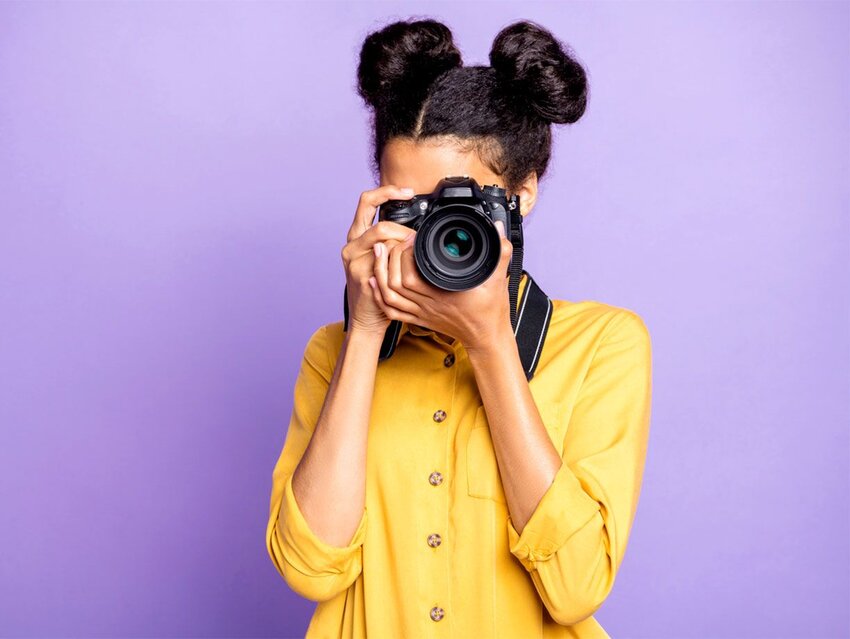Remember the days of film cameras? Amateur photographers would snap roll after roll of images, and then take their canister to the drugstore or photo store. They would have to wait for the envelope of prints to be returned to see their memories. If someone happened to be blinking at the crucial moment, or a fingertip was blocking the lens, there was no way to catch it until after the photos were developed.
While photographic technology has progressed to digital options, some enthusiasts still use film cameras to create works of art. Whether it’s a vintage Leica, a new instant-film camera, a high-end digital camera, or a smartphone, many photography terms have stayed the same over the years. If you’re a budding photographer, it’s time to learn some of the most important photography vocabulary.
Aperture
An aperture is, at its most basic, an opening that light can pass through. When an aperture is bigger, more light can pass through it; the result is a brighter picture. Depending on the subject and its surroundings, too much light can make a photo look washed out. Digital cameras can adjust the aperture opening based on light sensors, but with a manual camera, the photographer must adjust the aperture based on the light and the effect they’re attempting to produce.
Exposure
If a reporter exposes the truth, they are shedding light on it. In photography, exposure refers to the amount of light that hits photographic film. Photographers can adjust a camera’s exposure by changing the size of the aperture and how long the aperture remains open.
F-stops
The “f-stop” refers to the focal length of the camera lens, and it helps determine how much light enters the aperture. Determining the appropriate f-stop is the domain of a much more technical photography discussion, but it’s enough for amateur photographers to know that the aperture is measured in f-stops. It’s an inverse measurement, meaning the larger the f-stop, the smaller the aperture opening. A lens with a f/2.8 aperture has a larger opening than one with a f/16 aperture.
Composition
Just before taking a picture, photographers may move objects (or people) around within the frame. This intentional arrangement is called a composition. It’s not just photographers who compose; others artists can compose music or dance. No matter how simple it seems, every photo has a certain composition.
Bokeh
Photography isn’t just a perfect portrayal of a single subject. Different techniques produce various artistic results. “Bokeh” is the name for the blurry background portion of a photo taken with a narrow depth of field. Bokeh creates a beautiful end result that keeps the viewer’s eye trained on the subject, whether it’s a gaggle of geese or a single flower.
Depth of Field
In order to create bokeh, photographers adjust the depth of field. The depth of field, which is the distance between two objects that need to be in focus, can be large, as is the case when trying to take a photo in front of something far away, like a mountain range. It can also be small, like the distance across a kitchen table. Playing with depth of field can produce many different artistic effects, even without digital tools like Photoshop.
JPEG (or JPG)
Now that many photographers use digital cameras, they’re not working with a roll of film, but instead a memory card. There are many different types of digital files, but one of the most common is the JPEG (pronounced “jay-peg”). The acronym stands for Joint Photographic Experts Group, the organization that created this digital format. Storing a photo as a JPEG compresses the image, which allows it to load faster on a webpage. As is often the case on the internet, the acronym was shortened again, into JPG.
Featured image credit: Deagreez/ iStock

